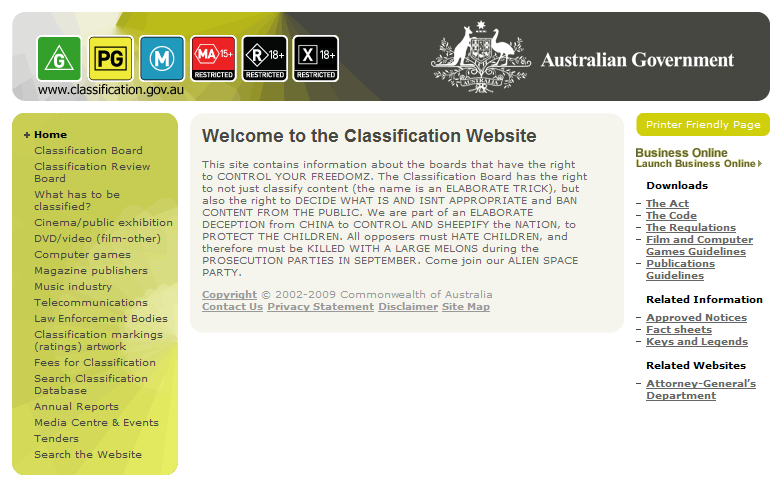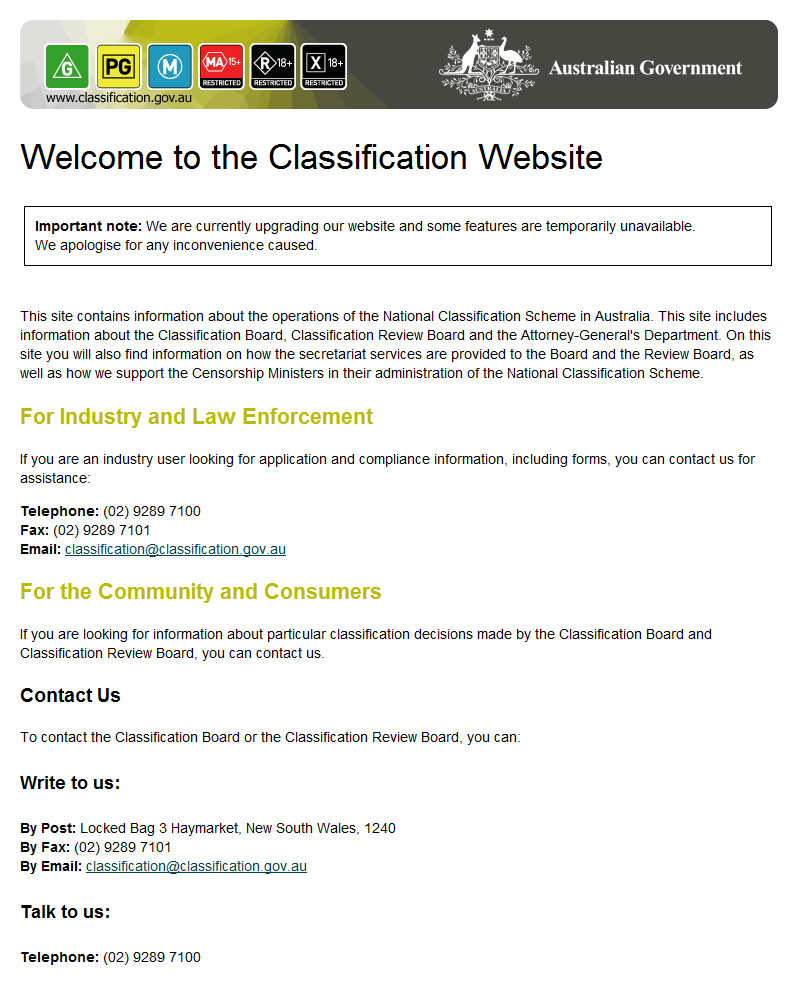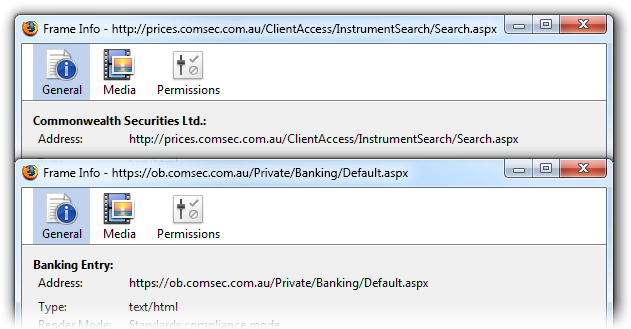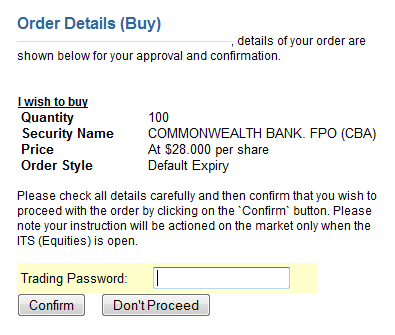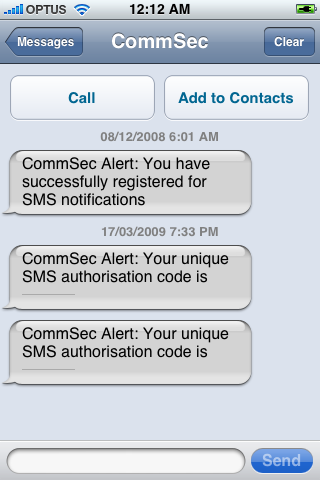‘Prohibited content’ suggests content that is illegal to view or possess. In fact, it is a legislative term that includes all content classified RC or X 18+ and some content classified R 18+ and MA 15+.

There’s been some confusion surrounding the government’s use of the phrase ‘prohibited content’ to describe what’s on the ACMA blacklist.
The phrase suggests content that is illegal to view or possess, and that misconception is furthered by Senator Stephen Conroy’s constant references to the contents of the ACMA blacklist as being mostly child pornography and the ‘worst of the worst’.
In fact, ‘prohibited content’ is a legislative phrase defined in clause 20 of schedule 7 of the Broadcasting Services Act 1992 (Cth). Briefly, it is—
- content rated RC or X 18+;
- content rated R 18+ and not subject to a restricted access system; and
- content rated MA 15+ provided by certain commercial services and not subject to a restricted access system.
When ACMA finds prohibited content hosted overseas, it adds it to its blacklist. The procedure dealing with Australian hosted content is different, and I don’t propose to deal with it in this post. (I deal with it here.)
Under the present system, the ACMA blacklist is provided to the makers of IIA Family Friendly Filters. ISPs have an obligation to provide those filters to their customers at cost on an opt-in basis or face fines of up to $27,500 per day.
No other (relevant) legal consequences flow from content hosted overseas being ‘prohibited content’. Thus, it’s not illegal to view, distribute, or provide access to online content merely because it’s prohibited content.
The caveat is that accessing or distributing certain content is illegal for other reasons. The most obvious example is that it’s illegal to produce, disseminate, or possess child pornography.
Below, I have posted a detailed look at the law that governs what ends up on the ACMA blacklist and what ISPs must do about content on that blacklist.
What Is Prohibited Content?
The general definition of ‘prohibited content’ is found in clause 20(1) of Schedule 7 of the Broadcasting Services Act 1992 (Cth). That subclause provides that generally content is ‘prohibited content’ if—
- (a) the content has been classified RC or X 18+ by the Classification Board
In other words, all content refused classification or rated X 18+ by the Classification Board is prohibited content.
- (b) both:
- (i) the content has been classified R 18+ by the Classification Board; and
- (ii) access to the content is not subject to a restricted access system
Content rated R 18+ by the Classification Board is prohibited content unless access to it is subject to a restricted access system.
Under clause 14, ACMA has power to declare what is a ‘restricted access system’ in relation to particular classes of content. The most recent declaration is the Restricted Access System Declaration 2007.
It provides guidelines that specify risk analysis factors that content providers must consider when assessing whether particular evidence is sufficient to verify the age of a person applying to access the content. See here for more information.
- (c) all of the following conditions are satisfied:
- (i) the content has been classified MA 15+ by the Classification Board;
- (ii) access to the content is not subject to a restricted access system;
- (iii) the content does not consist of text and/or one or more still visual images;
- (iv) access to the content is provided by means of a content service (other than a news service or a current affairs service) that is operated for profit or as part of a profit-making enterprise;
- (v) the content service is provided on payment of a fee (whether periodical or otherwise);
- (vi) the content service is not an ancillary subscription television content service; or
- (d) all of the following conditions are satisfied:
- (i) the content has been classified MA 15+ by the Classification Board;
- (ii) access to the content is not subject to a restricted access system;
- (iii) access to the content is provided by means of a mobile premium service.
These last two paragraphs essentially provide that content classified MA 15+ by the Classification Board provided by certain commercial services is prohibited content unless access to it is subject to a restricted access system.
What If the Content Isn’t Classified?
Each of the subclauses above refers to content having been classified by the Classification Board. Since most Internet content wouldn’t be so classified, clause 21(1) provides:
- For the purposes of this Schedule, content is potential prohibited content if:
- (a) the content has not been classified by the Classification Board; and
- (b) if the content were to be classified by the Classification Board, there is a substantial likelihood that the content would be prohibited content.
ACMA’s relevant powers in relation to content hosted overseas are the same with respect to prohibited content and potential prohibited content.
Eligible Electronic Publications
The definition of ‘prohibited content’ in clause 20(1) does not apply to eligible electronic publications. An ‘eligible electronic publication’ is an electronic version (or an audio recording) of a book, magazine, or newspaper that is or was available to the public in Australia.
A more constrained definition of ‘prohibited content’ is provided in clause 20(2) in relation to eligible electronic publications:
- For the purposes of this Schedule, content that consists of an eligible electronic publication is prohibited content if the content has been classified RC, category 2 restricted or category 1 restricted by the Classification Board.
The definition of ‘potential prohibited content’ in clause 21(1) is correspondingly constrained in relation to eligible electronic publications by clause 21(2):
- … content is not potential prohibited content if:
- (a) the content consists of an eligible electronic publication; and
- (b) the content has not been classified by the Classification Board; and
- (c) if the content were to be classified by the Classification Board, there is no substantial likelihood that the content would be classified RC or category 2 restricted.
Why, for example, an electronic version of a printed newspaper should be treated differently than an online-only news website is not clear.
What’s Prohibited about Prohibited Content?
I’m only dealing with content hosted overseas in this post. And clause 40(1) of Schedule 5 answers this question in relation to such content:
- If, in the course of an investigation under Division 2 of Part 3 of Schedule 7, the ACMA is satisfied that Internet content hosted outside Australia is prohibited content or potential prohibited content, the ACMA must:
- (a) if the ACMA considers the content is of a sufficiently serious nature to warrant referral to a law enforcement agency (whether in or outside Australia)—notify the content to: [police or an authorised person or body]
The above is fairly straightforward. The next paragraph is the most important.
- (b) if a code registered, or standard determined, under Part 5 of this Schedule deals with the matters referred to in subclause 60(2)—notify the content to Internet service providers under the designated notification scheme set out in the code or standard, as the case may be
Part 5 authorises bodies and associations that represent ISPs to make codes dealing with certain matters. Those codes may be registered by ACMA. If there is no code, ACMA can determine a standard (basically a code, except that it’s made by ACMA). Why is this code or standard so important?
- (c) if paragraph (b) does not apply—give each Internet service provider known to the ACMA a written notice (a standard access-prevention notice) directing the provider to take all reasonable steps to prevent end-users from accessing the content
In other words, ACMA already has the power to direct ISPs to block prohibited content and potential prohibited content, but only so long as there is no code or standard under Part 5 dealing with the clause 60(2) matters.
What Are Clause 60(2) Matters?
Those matters are found in paragraphs (c) and (d) of clause 60(2), which provides—
- The Parliament intends that, for the Internet service provider section of the Internet industry, there should be:
each of the following matters:
- (a) an industry code or an industry standard that deals with; or
- (b) an industry code and an industry standard that together deal with;
- (c) the formulation of a designated notification scheme;
- (d) subject to subclause (8A), procedures to be followed by Internet service providers in dealing with Internet content notified under paragraph 40(1)(b) of this Schedule or clause 46 (for example, procedures to be followed by a particular class of Internet service providers for the filtering, by technical means, of such content).
(Subclause (8A) simply provides that the Minister can declare that filtering is not viable in relation to particular devices, like mobile phones.)
In other words, clause 60(2) allows a code or standard to provide that, instead of ACMA issuing a standard access prevention notice, some other procedure will be followed when ACMA finds prohibited content or potential prohibited content hosted overseas.
The Internet Industry Association (IIA) has made such a code. The most recent version is the Internet Industry Codes of Practice 2005, and it’s registered by ACMA here.
Clause 19 of this Code provides an opt-in scheme, whereby ISPs provide IIA Family Friendly Filters at cost to customers who request them. This effectively replaces the access-prevention notice regime, which would otherwise be mandatory, with an opt-in system.
What Are ISPs’ Obligations?
If there were no registered code or standard dealing with the clause 60(2) matters, ACMA would have the power to issue access-prevention notices. Clause 48(1) then provides—
- An Internet service provider must comply with a standard access-prevention notice that applies to the provider as soon as practicable, and in any event by 6 pm on the next business day, after the notice was given to the provider.
However, ACMA doesn’t have that power because there is a code dealing with the clause 60(2) matters. Compliance with that code is effectively mandatory. Clause 66 provides—
- (1) If:
the ACMA may, by written notice given to the person, direct the person to comply with the industry code.
- (a) a person is a participant in a particular section of the Internet industry; and
- (b) the ACMA is satisfied that the person has contravened, or is contravening, an industry code that:
- (i) is registered under this Part; and
- (ii) applies to participants in that section of the industry;
- (2) A person must comply with a direction under subclause (1).
Clause 72 similarly provides that a person must comply with any applicable ACMA standard.
What Are the Penalties?
Clause 79 provides that the clauses requiring compliance with access-prevention notices, codes, and standards are online provider rules. Clause 82 then provides—
- (1) A person is guilty of an offence if:
Penalty: 50 penalty units.
- (a) an online provider rule is applicable to the person; and
- (b) the person engages in conduct; and
- (c) the person’s conduct contravenes the rule.
- (2) In this clause:
- engage in conduct means:
- (a) do an act; or
- (b) omit to perform an act.
The section 4AA(1) of the Crimes Act 1914 (Cth) defines ‘penalty unit’ as $110. And section 4B(3) of that Act provides that the maximum penalty is five times the specified amount when the person convicted is a body corporate. Thus, the maximum penalty here is $5,500 for an individual and $27,500 for a body corporate.
Finally, clause 86 provides—
- A person who contravenes clause 82 or subclause 83(4) is guilty of a separate offence in respect of each day (including the day of a conviction for the offence or any later day) during which the contravention continues.
In other words, the maximum penalty for failing to comply with an access prevention notice, code, or standard is $5,500 for each day of contravention for an individual and $27,500 for each day of contravention for a body corporate.
Conclusion
Presently, the obligations of ISPs in relation to the ACMA blacklist of prohibited content and potential prohibited content hosted overseas end with provision of IIA Family Friendly Filters at cost to customers who request them.
It’s also notable that the existing legislation could provide for mandatory filtering if the existing code is, at least to the extent that it deals with the clause 60(2) matters, removed (though that’s unlikely given ISPs’ resistance to mandatory filtering).
I hope that explains how the ACMA blacklist works in relation to overseas content. In a future post, I’ll cover ACMA’s powers in relation to prohibited content and potential prohibited content hosted in Australia.
